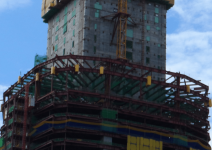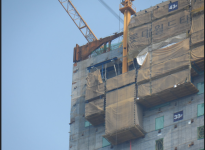M
member 1218881
Guest
In high-rise buildings, as shown in the figure, are the steel beams connected to the walls in a way that transfers moments or are they pinned? If all of them are connected with hinges, how will the moments between the columns and the shear wall be transmitted? Are some of the steel beams connected to the walls we see in these pictures moment-transferring type? Because there is no cross between the beams etc. It doesn't appear either. Since these are outrigger systems, I think moment-transmitting connections are provided on certain floors. Could they be connecting the beams with hinges on other floors?






